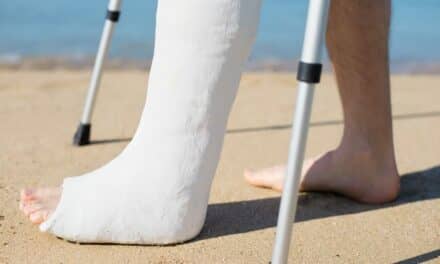 While last year’s American College of Cardiology meeting focused on advances in genetics and heart disease, this year’s version (March 12 to 15 in Anaheim, Calif.) was billed as “A New Meeting for a New Millennium.” This premier cardiovascular meeting continues to face an immense educational challenge amid a technology driven world creating new cardiac drugs and devices faster than they can be clinically tested!
While last year’s American College of Cardiology meeting focused on advances in genetics and heart disease, this year’s version (March 12 to 15 in Anaheim, Calif.) was billed as “A New Meeting for a New Millennium.” This premier cardiovascular meeting continues to face an immense educational challenge amid a technology driven world creating new cardiac drugs and devices faster than they can be clinically tested!
Though the meeting covered four full days, Sunday has emerged as the highlight, with three special mini meetings focused on the major sub-groups of cardiology practice: Clinical Cardiology, Echo Cardiology and Interventional Cardiology. These special day-long sessions featured live-cases and interactive discussions to focus the audience on changes that should be considered in their own medical practices.
So while your neighborhood cardiologist should have received a more focused educational experience, the bottom line, as always, is what’s new!
Imaging’s Role
MRI: Cardiac MRI is clearly being marketed to both cardiologists and radiologists. New product approvals and rollouts are well underway, and scientific presentations at the ACC meeting are starting to appear. This month’s ISMRM meeting should provide a more detailed look at the progression and expectations for this market with a billion dollar potential. One forecast predicts a dedicated cardiac MRI system in every cath lab (replacing diagnostic angiography) and also in every ER (screening chest-pain patients).
CT: Less than favorable research from the Universities in Munich and Kentucky-Lexington suggested some limitations to EBCT for cardiac screening and diagnosis in coronary artery disease and high-risk lesions. Cardiac CT faces many of the same challenges as EBCT, and the increased level of research and interest should bring both of these technologies forward for the benefit of everyone involved in cardiac care.
X-ray: GE Medical Systems displayed the first flat-panel digital angiography system, with resolution of 1024-by-1024. An increased dynamic range promises more soft tissue detail. But if diagnostic angiography moves to MRI, is this development too late for primetime?
On the ‘Net
The cardiology Internet boom hit the exhibit floor this year – and the clear winner is ? not in sight. The companies comprised both B2B and B2C opportunities, and some previously existing companies have added .com to their company names since last year! Everyone knows that cardiologists need to be part of the same connected medical work-space as every other primary care and specialist M.D. This starts with an electronic medical record, requires an intelligent insurance/coverage database and accepted standards for communication and file management.
While the internal B2B aspects of medicine should be streamlined soon (latest prediction is 2 to 3 years), the more challenging opportunity is the patient who walks into the M.D.’s office with 20 pages of printouts from the Internet. In a recent article for The New York Times, Gina Kollata writes that doctors respond to this now-daily event with varied reactions, ranging from indifference to annoyance to pleasure. Educated patients are likely to be more attentive to the diagnostic and therapeutic protocols being prescribed, and the Internet can help patients navigate the research and leading-edge developments. The challenge for M.D.s is clear – stay up to speed, or the Internet-era patients will find another M.D. So it should be no surprise that two of the educational options offered by the ACC included a) free downloads of cardiology protocols into Palm Pilots and b) free Web-site services for ACC member practices via Salu.net.
If you think of the forces likely to change the statistics of cardiovascular disease in America, patient education looks to be the likely selection, and the Internet (not traditional M.D. visits and media articles and events) is a new tool that can lead to substantive change.
When the ACC asks for my input on next year’s meeting, the Internet will be my choice for the main focus.
Doug Orr, president of J&M Group (Ridgefield, Conn.), consults with medical device companies in strategy and business development for emerging growth markets, notably radiology and cardiology. Comments and suggestions can be sent to [email protected].





